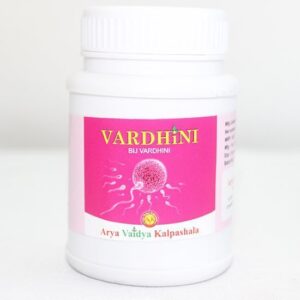In a world increasingly filled with noisy tech, flash-over-functionality, and CMSs that do too much and mean too little, Wagtail glides above. Quietly. Elegantly. Distinctly.
Not just a content management system, Wagtail development is an experience—a whisper of possibility for developers, a song of structure for editors, and a bird of freedom for organizations that believe in thoughtful, powerful content.
1. Born to Fly: The Wagtail Origin
Crafted in the quiet corridors of Torchbox in 2014, Wagtail wasn’t made to dominate the CMS landscape—it was made to improve it. Python-based, Django-native, and open-source at heart, Wagtail emerged from a place of both practicality and poetry. Torchbox built it not to boast, but to solve real editorial problems with elegance.
This was never a tech startup gimmick. It was a developer’s gift to content creators—a CMS that respects both the code and the content.
2. The Feather in Django’s Cap
If Django is a framework built for the meticulous, Wagtail is its intuitive twin. It doesn’t demand, it invites. Developers don’t wrestle with it—they collaborate. With StreamField, custom page models, and a clean admin interface, Wagtail feels like a painter’s brush, not a factory tool.
There’s a subtle intelligence to it. A CMS that disappears when the work begins. You don’t notice Wagtail—you notice the content taking shape. Clean. Purposeful. Alive.
3. Content First, Always
Wagtail has an opinion—and it’s the right one: content is everything. Not SEO hacks, not plugin overload, not aesthetic distractions. Content. Pure and powerful.
Editors get an interface that feels like poetry: intuitive workflows, rich previews, drag-and-drop ease. No fighting with structure. No endless menu mazes. Just you, your story, and a tool that listens.
Wagtail is the rare system that gets out of the way—because it knows what’s in the spotlight should be the words, the images, the message—not the medium.
4. StreamField: A Symphony of Structure
Ah, StreamField—Wagtail’s not-so-secret weapon.
It doesn’t just allow flexibility; it expects it. Developers can define reusable, complex content structures with ease, while editors assemble content blocks like stanzas in a poem.
This isn’t modular content. It’s modular meaning. Structured, yes, but never rigid. You build pages the way a storyteller builds arcs. The way a musician builds movements.
Want a video gallery inside a case study? Done. Need pull quotes within a long-form article? Easy. StreamField is a poetic invitation to design, write, and build with imagination.
5. Developer Experience as Design
Good developer experience is often silent—it doesn’t call attention to itself. Wagtail excels here. Its API is clean. Documentation is empathetic. Extensibility is not an afterthought; it’s a design principle.
Wagtail is Pythonic in the truest sense—elegant, readable, maintainable. Developers don’t dread Wagtail projects. They savor them. They revisit them. They write code that ages gracefully, like a well-bound book.
Pair it with Django, and you get power wrapped in simplicity. You can build intricate editorial workflows, custom page types, or decoupled interfaces—all without ever sacrificing clarity.
6. Accessibility as Architecture
Wagtail doesn’t treat accessibility like a compliance checkbox. It weaves it into its fabric. The admin is built to be navigable for all. Features like inline help, keyboard-friendly navigation, and semantic markup aren’t just options—they’re expectations.
This is software with social awareness. A CMS that doesn’t leave anyone behind.
And this matters—not just for compliance, but for conscience. Because the web is for everyone, or it is for no one.
7. Scale Without Bloat
Too many CMSs confuse scaling with swelling. Not Wagtail.
From boutique nonprofits to global enterprises, Wagtail powers content at every scale—and does so lightly. Multisite management, internationalization, headless readiness, custom workflows—these aren’t bolt-ons. They’re embedded truths.
Need a decoupled front end? Wagtail’s happy to serve JSON. Need a traditional site with a gorgeous UI? Wagtail’s templating sings.
It scales not through excess, but through precision.
8. Headless, With a Heart
Yes, Wagtail is a phenomenal headless CMS. But unlike others, it doesn’t lose its soul in the separation. It gives you REST and GraphQL APIs, yes. But it also gives you a rich editorial experience.
It’s a rare duality: headless with heart. Editors feel empowered. Developers feel unleashed. And the resulting front ends? Fast, modern, human.
In an age where headless often means faceless, Wagtail still smiles.
9. Community, Not Crowd
There’s something sacred about the Wagtail community. It’s not a shouting match. It’s a circle. Maintainers, contributors, agencies, freelancers—they share, support, and shape.
Documentation is curated with care. Contributions are reviewed with gratitude. The tone is warm, not transactional.
This isn’t just open source. It’s open spirit.
And that spirit shows in every pull request, every Slack exchange, every tutorial written not to impress, but to include.
10. When Craft Meets Culture
Wagtail thrives in institutions that value quality—universities, charities, media houses, cultural organizations. These aren’t just users; they’re partners in purpose.
Because Wagtail doesn’t just serve content. It serves causes. From the British NHS to Google’s blog to the Royal College of Art, it holds space for stories that matter.
It’s a CMS for the meaningful web.
And when the work matters, the tools you use should, too.
11. Learning to Soar
For teams adopting Wagtail, the learning curve is more like a learning arc. Graceful. Supportive. Empowering.
You learn not just how Wagtail works, but why it works the way it does. That insight changes how you build. It shifts your expectations. You start looking for clarity elsewhere, too.
Wagtail teaches craft by example.
12. Beyond the Horizon
Wagtail doesn’t shout about features. It grows them. Thoughtfully. Iteratively.
Recent releases introduce features like enhanced live previews, scheduled publishing, and improved multilingual support. All driven by user need, not hype.
It’s not chasing trends. It’s defining quiet standards. It doesn’t want to be everything. It wants to be right.
And that difference is everything.
13. Featherlight Futures
The future of Wagtail is not in monopolies or market share. It’s in meaning. In movement. In momentum that respects nuance.
A CMS that will always put editors first. That will always honor design. That will always embrace developers not as consumers, but as co-creators.
Wagtail is the long game—the one that rewards craft, community, and care.
It’s about more than features—it’s about feeling.
14. Should You Choose Wagtail?
Only if you:
- Believe that content deserves clarity.
- Want a CMS that doesn’t get in the way.
- Prefer craftsmanship over convenience.
- Value open source, not just for cost, but for culture.
Because Wagtail won’t babysit you. It will challenge you to build better. To write better. To serve your users more honestly.
And that’s why we love it.
15. A CMS That Doesn’t Steal the Spotlight
In a world of CMSs trying to be the main character, Wagtail is content to be the stage. The scaffolding. The soil.
It doesn’t want praise. It wants to support.
It doesn’t market itself with loud claims. It earns loyalty with soft power.
It doesn’t pretend to be a no-code miracle. It empowers the right code.
It is not everything. It is enough.
16. Parting Feathers
Wagtail is not for everyone. But for those it’s for, it’s unforgettable.
It’s the CMS that feels like a favorite pen. The system that feels like silence when you’re trying to write. The codebase that feels like clean water—transparent, essential, refreshing.
It is, in short, a rare bird.
So if you’re ready to build something that lasts—something meaningful, something beautiful—
Take flight.
Choose Wagtail.
17. A CMS That Meets You Where You Are
Wagtail is not just a tool—it’s an invitation. To build. To create. To imagine beyond limitations. Unlike many CMSs that impose boundaries, Wagtail offers a platform that grows with you, allowing both simplicity and complexity to coexist. From its intuitive admin interface to the powerful back-end architecture, it strikes the perfect balance between accessibility and depth. There’s an inherent trust Wagtail places in its users—whether developers or editors—that turns the development process into a dialogue.
It’s easy to see how some might think of a CMS merely as a backend structure—a utility to facilitate the delivery of content. But Wagtail demands a shift in perspective. This isn’t just a tool to manage information. It’s a space for creation, a canvas for collaboration, and a partner in your project’s journey. Wagtail doesn’t just want to house your content; it wants to celebrate it. And the way it does this—gently, with respect for both its user’s needs and the potential of the digital experience—is what sets it apart.
It’s more than technical. It’s about feeling the architecture come to life with every line of code. It’s about noticing how seamlessly content flows through the structure, without interruption, and without the weight of unnecessary bloat. It’s a CMS that asks you to connect to the content you create in ways that transcend the traditional, offering flexibility and stability in equal measure. Developers, too, get the satisfaction of knowing they aren’t just working with another pre-built structure—they are working with a framework that’s fluid, evolving, and deeply customizable.
When developers work with Wagtail, it’s clear that the design is intended not just for Toronto web developers with technical expertise, but for everyone who will interact with it: from content editors to marketing teams. The simplicity of Wagtail’s user interface invites non-technical users into a space traditionally reserved for the highly skilled, while never compromising on depth for developers. Wagtail encourages a collaborative, harmonious relationship between creators and their tools, each part of the process—whether building content, editing, or publishing—feeling like a shared experience. This is crucial because the best CMSs don’t just focus on what they can do for their users—they focus on how they can empower their users to do their best work.
For content editors, it means fluid, user-friendly navigation that doesn’t overwhelm but instead enhances. For developers, it means clean, readable code, free from unnecessary complexity. The result is a CMS that enhances the work of every user, no matter their level of expertise or experience. And as content changes, grows, and evolves, Wagtail provides a steadfast backbone that allows the structure to stay intact, adjusting as needed without disrupting the flow.
In a time when many systems are focused on delivering more, Wagtail chooses to deliver better. It’s a choice that speaks to the underlying philosophy that runs through its design: quality, not quantity. Wagtail’s features don’t overwhelm; they delight. And that’s why, in an era when options abound, Wagtail doesn’t just stand out—it stands apart. It’s a CMS that asks you to focus on the essentials—content, storytelling, design—without getting lost in the noise. Wagtail is a gentle but powerful invitation to craft something that lasts, to create with purpose, and to build with intention.
- Where Code Meets Craft—A Love Letter to the Feathered CMS
- In a world increasingly filled with noisy tech, flash-over-functionality, and CMSs that do too much and mean too little, Wagtail glides above. Quietly. Elegantly. Distinctly.
- tech
Related posts:
 Why KBH Games Is Perfect for Family-Friendly Online Entertainment
Why KBH Games Is Perfect for Family-Friendly Online Entertainment
 High-Quality Biomedical Waste Incinerators & Laboratory Glassware Made in India
High-Quality Biomedical Waste Incinerators & Laboratory Glassware Made in India
 Understanding the Role of IoT in Modern Manufacturing: A Comprehensive Guide to Smart Factories and Industrial Transformation
Understanding the Role of IoT in Modern Manufacturing: A Comprehensive Guide to Smart Factories and Industrial Transformation
 Best Account Management Software for All Businesses – EmizenTech
Best Account Management Software for All Businesses – EmizenTech
 The Role of an ATS in Onboarding: Bridging the Gap Between Offer and Start Date
The Role of an ATS in Onboarding: Bridging the Gap Between Offer and Start Date
 Benefits of AI-powered CCTV Cameras for Business Surveillance
Benefits of AI-powered CCTV Cameras for Business Surveillance
 Top App Development Agency UK – Transforming Ideas into Apps
Top App Development Agency UK – Transforming Ideas into Apps
 Transforming Oil and Gas Operations in Qatar with Microsoft Dynamics 365 Supply Chain Management
Transforming Oil and Gas Operations in Qatar with Microsoft Dynamics 365 Supply Chain Management







